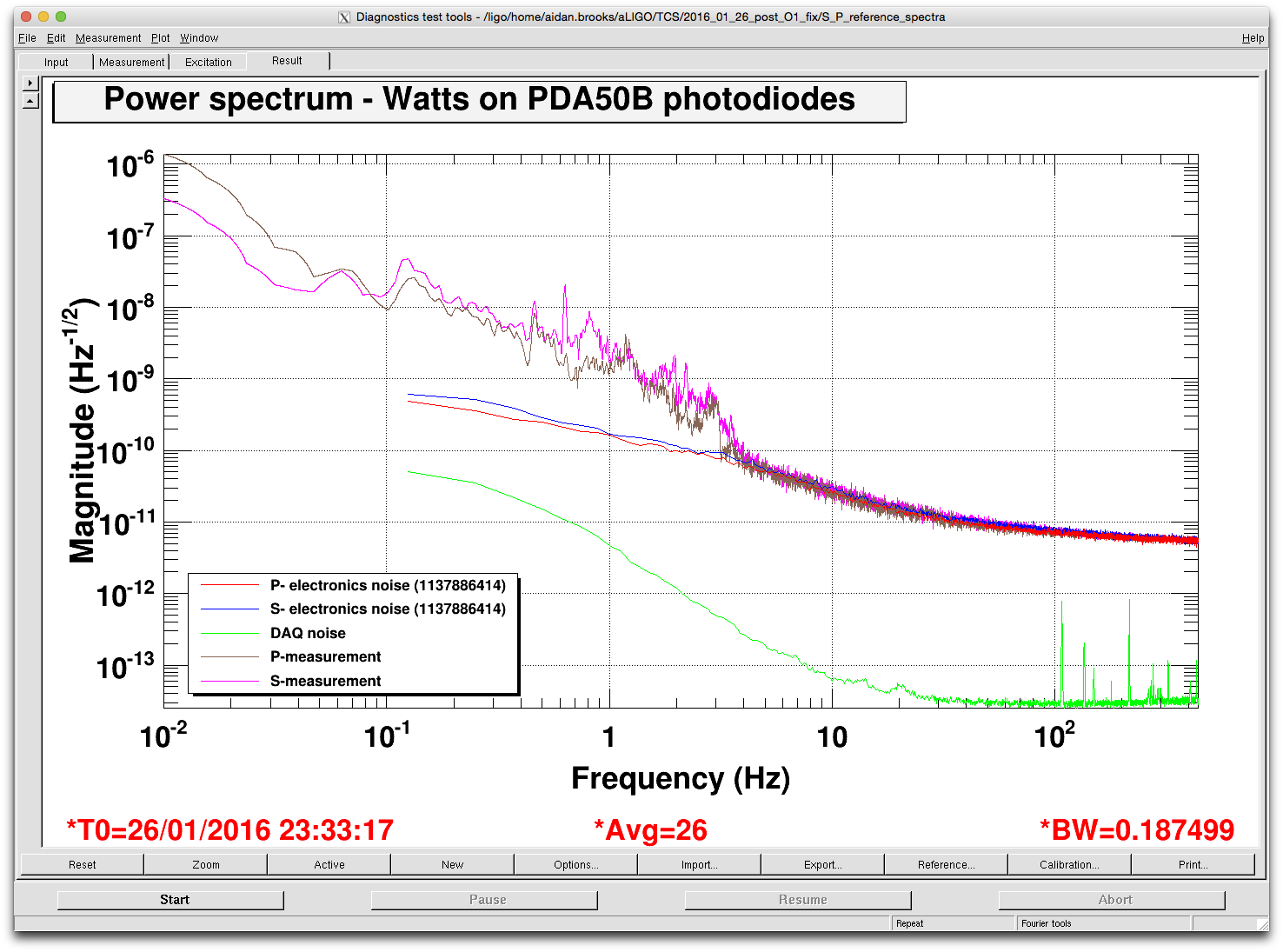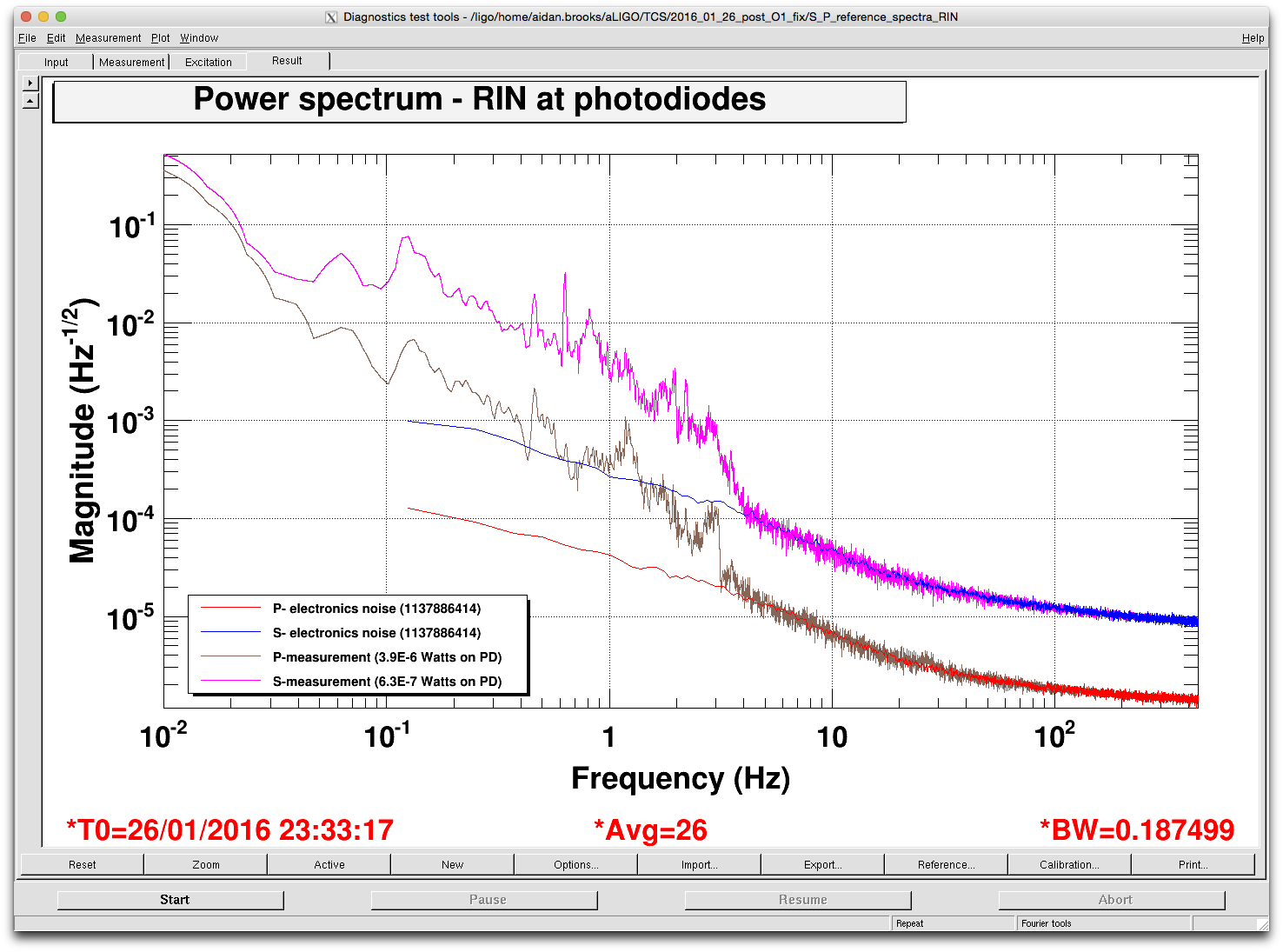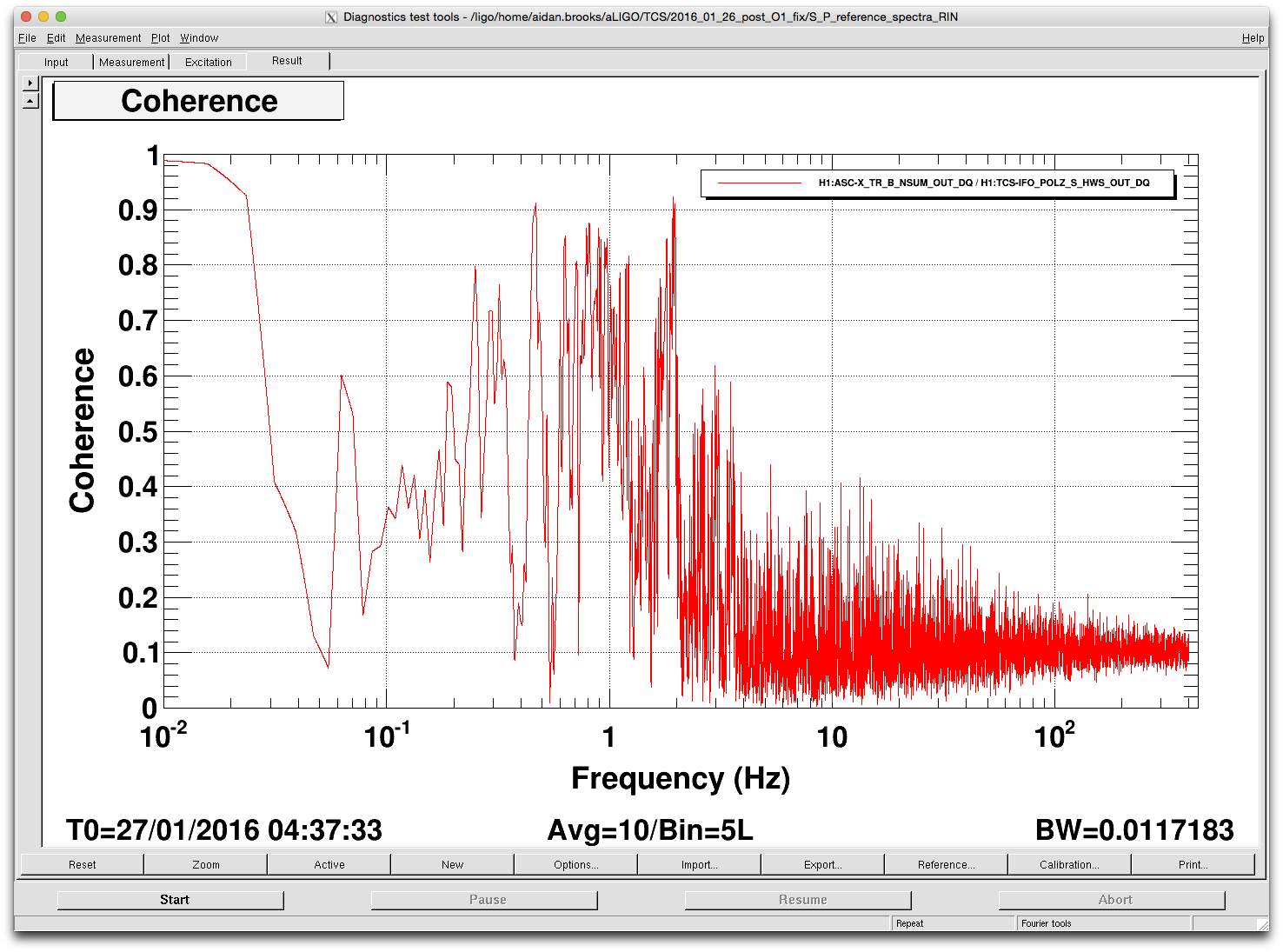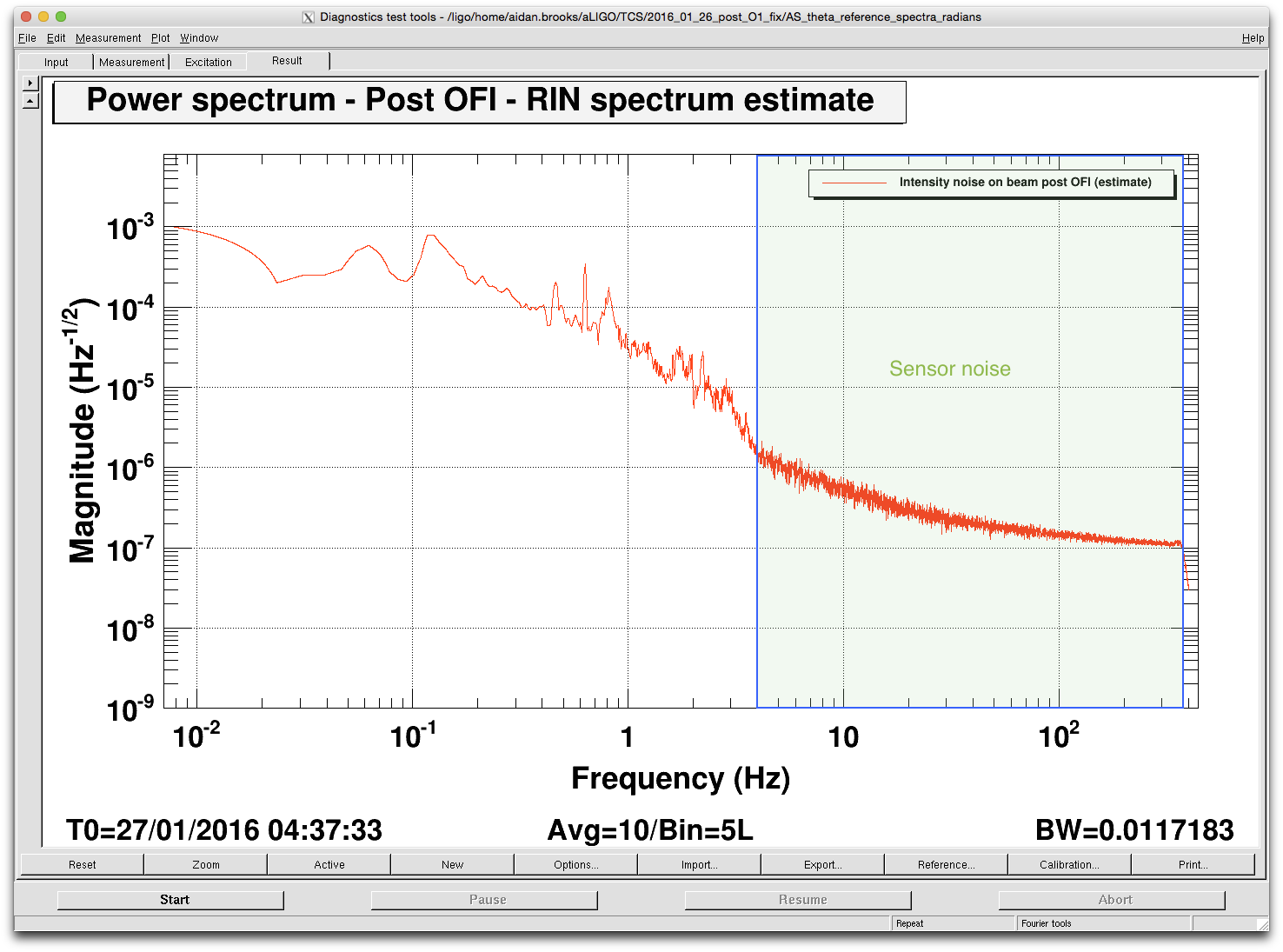I have analyzed some initial measurements from the fast polarization photodetectors (from a lock-stretch on Sat 31st Jan: centered around GPS = 1138230306). The channels H1:TCS-IFO_POLZ_P_HWS_OUT and S_HWS_OUT are the respectively powers measured by the P- and S- photodiodes (in Watts - accounting for the dewhitening and response of the photodetectors).
The absolute level of noise of S and P on the table is roughly the same, albeit with distinct differences in the spectra. The relative intensity noise, on the other hand, is an order of magnitude larger in the S- polarization than in P.
Also shown is the coherence between S and P. The fact that the coherence isn't very large indicates that something (either in the interferometer or the output chain after the BS_AR reflection) is injecting more noise on the S- polarization than on the P-polarization. Obviously, this needs a more detailed investigation.
Lastly - the model includes an estimate of the noise in the polarization angle at the AS port (AS_RN) - this is important because it is close to what the OFI will see and convert to intensity noise at the output of the OFI. In the horizontal axis, we're limited by sensing noise above 4Hz.
The DC level of polarization rotation at the OFI, theta_DC, is around 0.09 rad (5.2 deg) in the middle of the lock-stretch. The estimated intensity noise on transmission through the OFI is 2*theta_DC*AS_RN and is shown in the attached spectra.
Power

RIN

Coherence

Polarization induced RIN after the OFI





